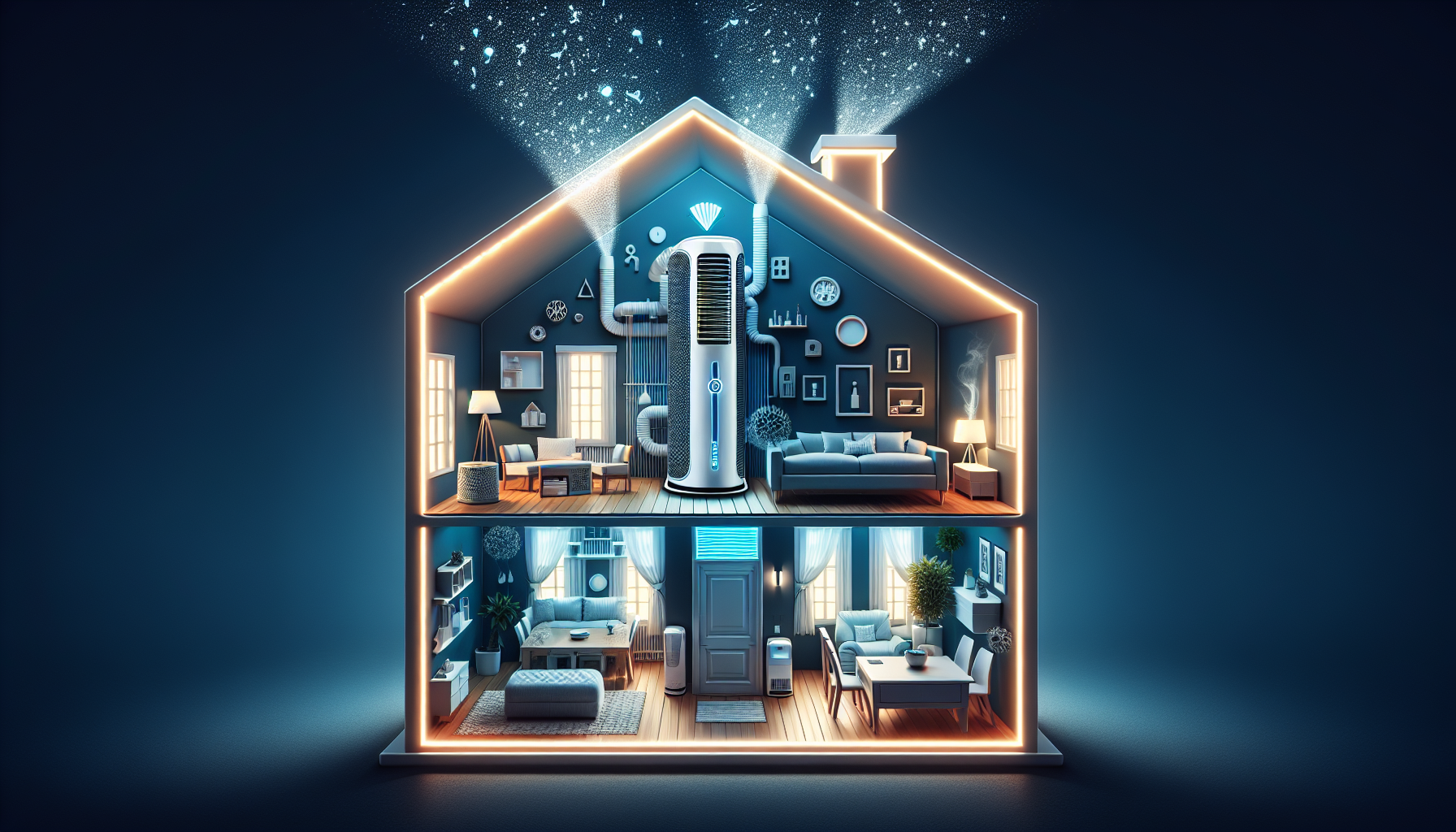Imagine coming home to a house filled with clean, fresh air, where every breath you take feels rejuvenating. The question on everyone’s mind is whether one air purifier can truly provide such an experience. In this article, we will explore the capabilities of air purifiers and whether they are capable of effectively cleaning an entire house. Get ready to breathe easy and discover the truth behind the power of these remarkable devices.
Can One Air Purifier Clean an Entire House?
If you’re looking to improve the air quality in your home, you may be wondering if one air purifier is enough to clean your entire house. The answer depends on several factors, including the size of your home, the type of air purifier you choose, and the specific needs of your household. In this article, we will explore these factors in detail and provide you with some tips for using an air purifier in the whole house effectively.

Factors to Consider
Before investing in an air purifier for your entire house, it’s important to consider a few key factors. These factors will help you determine whether one air purifier will be sufficient for your needs or if you may require multiple units.
Size and Coverage
The size of your home plays a significant role in determining whether one air purifier can effectively clean the entire space. Air purifiers are typically rated based on the maximum square footage they can cover. It’s essential to choose an air purifier that matches the size of the area you wish to purify. For example, a small air purifier may be suitable for a single room, while a larger, more powerful unit may be necessary for an entire house.
Filter Types and Technology
Another crucial factor to consider is the type of filter used in the air purifier and its purification technology. Different air purifiers utilize various filters, such as HEPA filters, activated carbon filters, or electrostatic filters. HEPA filters are highly effective at capturing microscopic particles, including dust, pollen, and pet dander. Activated carbon filters are excellent for removing odors and chemicals, while electrostatic filters use an electrical charge to trap particles.
Placement and Airflow
Proper placement and airflow are essential for maximizing the effectiveness of an air purifier in a whole-house setting. Ideally, the air purifier should be placed in a central location where it can efficiently circulate and filter the air throughout the entire house. Additionally, paying attention to the airflow patterns in your home can further optimize the air purification process.
Number of Rooms
Consider the number of rooms in your house that require air purification. If you have a small house or apartment with only a few rooms, one air purifier may be sufficient. However, larger homes with multiple rooms may require additional units or a centralized air purifier system to ensure comprehensive coverage.
Cost and Budget
Budget is an essential consideration when deciding on the number of air purifiers necessary for your home. While the cost of a single air purifier may be reasonable, purchasing multiple units can quickly add up. Balancing your budget with your air purification needs is crucial. Prioritize the areas where the air quality is most important, such as bedrooms or living rooms, and consider adding additional units over time if needed.
Maintenance and Filter Replacement
Like any appliance, air purifiers require regular maintenance to operate at their best. This includes cleaning the filters, replacing them when necessary, and keeping the unit free of dust and debris. Consider the maintenance requirements and filter replacement costs when deciding on the number of air purifiers for your home.
Benefits and Drawbacks
Using one air purifier for your entire house can offer several benefits. It can help remove allergens, pollutants, and odors from your living space, resulting in cleaner air and improved respiratory health. Additionally, having a centralized air purifier can be more cost-effective and convenient than having multiple units.
However, there are some drawbacks to using a single air purifier. Depending on the size of your home, one purifier may not provide sufficient coverage to effectively clean the air in all areas. Additionally, if you have specific air quality concerns in different rooms, such as high levels of dust or pet dander, having individual units in those spaces may offer more targeted purification.
Tips for Using an Air Purifier in the Whole House
To make the most of your air purifier in a whole-house setting, consider the following tips:
- Choose an air purifier with the appropriate square footage coverage for your home size.
- Opt for an air purifier with a combination of filters to address different types of pollutants.
- Place the air purifier in a central location for maximum airflow and circulation.
- Consider supplementing with additional units in rooms that require extra air purification.
- Regularly clean and maintain your air purifier to ensure optimal performance.
Final Thoughts
While one air purifier may be sufficient to clean an entire house, it’s crucial to consider the specific factors discussed above to determine if this is the right solution for your home. By understanding the size and coverage, filter types, placement, number of rooms, cost, and maintenance requirements, you can make an informed decision about the use of air purifiers in your home. Remember to weigh the benefits and drawbacks and implement the provided tips to maximize the effectiveness of your air purification system. With proper research and consideration, you can create a healthier and cleaner living environment for you and your family.
